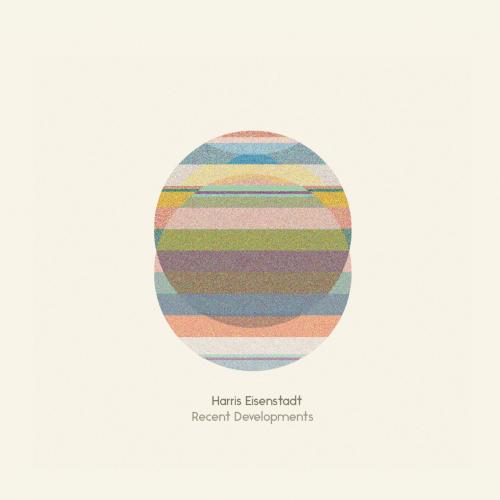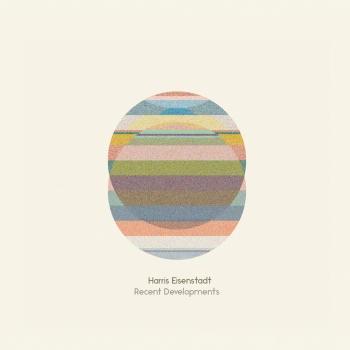
Recent Developments Harris Eisenstadt
Album info
Album-Release:
2017
HRA-Release:
21.03.2017
Album including Album cover Booklet (PDF)
- Recent Developments:
- 1 I. Introduction 00:26
- 2 II. Prologue 00:57
- 3 III. Part I 06:33
- 4 IV. Interlude (group 1) 01:58
- 5 V. Part II 06:27
- 6 VI. Interlude (quartet) 01:37
- 7 VII. Part III 03:10
- 8 VIII. Interlude (duo 1) 00:27
- 9 IX. Part IV 05:13
- 10 X. Interlude (group 2) 01:20
- 11 XI. Part V 05:33
- 12 XII. Interlude (duo 2) 01:41
- 13 XIII. Part VI 02:53
- 14 XIV. Epilogue 02:18
Info for Recent Developments
Recent Developments is the latest project from New York composer, percussionist, and bandleader Harris Eisenstadt, his 20th release as a bandleader. His five previous Songlines recordings have been by the 4-5 person groups Canada Day and Golden State. His new nonet, which includes many of Brooklyn’s most esteemed creative musicians, is the fifth installment of music for medium-sized ensembles, following Fight or Fight (2003), The All Seeing Eye + Octets (2006), Woodblock Prints (2010), and Canada Day Octet (2012). As Harris explains: “Each were explorations in long-form composition and unusual instrumentation. And each walked the line between small group conception and large ensemble ambition. Medium-sized ensembles present unique sets of compositional problems. They contain many more voices than a small group has to account for. But at the same time, you are not quite dealing in big, heaving blocks of sound…Writing for a medium-sized ensemble is, in miniature, something like writing for chamber orchestra. Textures can be massed, but they can just as easily be quite thin. I wanted to explore all of the weights available in Recent Developments, and discovered again that the heaviest weight in a medium-sized group still has a sheerness, a level of exposed-ness, that is neither large nor small.”
Eisenstadt sketched all the music on a transatlantic flight home to Brooklyn at the end of a tour. “Most of the melodic and rhythmic material came rushing out in those nine hours. [But] it took a couple months [spent] mainly revising the counterpoint…to try and balance the orchestrations, to spread the materials throughout the group to exploit as many instrumental textures as I could… The wide range of timbral combinations is at the heart of the recording, and is reflected in the color scheme and shape of David Foarde’s beautiful cover design.” The form of the suite is divided into fourteen parts: six ensemble sections and eight discreet transitional sections in which snapshots of the material from the ensemble sections are re-imagined and interpreted freely in sub-ensembles of varied instrumentation that were chosen on the day of the recording.
During the revision process Harris drew on such diverse influences as Jane Jacobs’ The Death and Life of Great American Cities, David Chase’s The Sopranos, and Beni Ourain-style rug weaving of the Berbers from the Atlas mountains of Morocco: “I thought a lot about Jacobs’ still-prescient views of what was happening to New York City in the mid-20th century, as mixed-use, mixed-income, mixed-ethnicity neighborhoods were razed and low-income housing projects became ubiquitous. The music takes inspiration from Jacobs’ ideas of community, [offering] a variety of musical/emotional settings that reflect the many ways in which communities interact; not only in varying numbers, but in interactions of varied emotional tenor… Earlier this year I discovered Beni Ourain-style rugs and fell in love with their instantly-identifiable aesthetic…No two rugs are the same; each design embraces abstraction alongside lyricism, simplicity and minimalism alongside textural complexity, and are often woven by mother and daughter together. They are each examples of communal creation, improvisational whimsy, and refined detail.”
Musical influences involve the mid-sized ensemble compositional strategies of Henry Threadgill, Dave Douglas, and John Zorn. “I started working with Zorn this past year, playing ten tunes of his new Bagatelles book (of 300 tunes!) with Chris Dingman and Eivind Opsvik. It’s been inspiring to witness first-hand not only how prolific he is, but also his microscopic attention to detail. The Bagatelles are miniatures, yet they contain multitudes. Even though Recent Developments is long-form rather than short form, I wanted to honor that attention to detail in my revisions. I wanted to treat every line, whether main melody, counterpoint, rhythmic/harmonic underpinning, with the same meticulousness… I’ve always admired [Douglas’s] prolific output and his attention to lyricism…Threadgill remains a central source of inspiration as a composer, arranger, bandleader. His aggregates of unusual instrumentation and their rhythmic vitality continue to astonish.”
If this all sounds pretty serious, the music as performed certainly has its beguiling idiosyncrasies that allow for a variety of responses: “This music, though narrative-based, claims, through abstraction or subversion of expectations, no ‘program note’ of intent. One listener’s deadpan is another’s lightly ironic is another’s dispassionate is another’s emotionally charged.”
Anna Webber, flute
Sara Schoenbeck, bassoon
Nate Wooley, trumpet
Jeb Bishop, trombone
Dan Peck, tuba
Brandon Seabrook, banjo
Hank Roberts, cello
Eivind Opsvik, bass
Harris Eisenstadt, drums
Harris Eisenstadt
a drummer and composer originally from toronto, takes a fixer’s approach to music making, looking for ways to fit the pieces together. He works along jazz’s progressive fringe but doesn’t generally set out to make a ruckus. In his own music especially, he often seems intent on extracting consonance from dissonance or forging ungainliness into grace." (Nate Chinen, the New York Times). Critics have called him "one of the new generation's leading composers" (Troy Collins, allaboutjazz.com), "strong proof that jazz is still young and growing," (Greg Burk, l.a. weekly), "vital and increasingly influential" (Glenn Astarita, jazzreview.com) and "one of the most creative and skilled musician/composers incorporating traditional material to create new and vital improvised music" (Robert Iannapollo, allaboutjazz-new york). The village voice's Jim Macnie adds, "he's perpetually building new ensembles to suit the variety of music he hears in his head—that's what composers do."
One of only a handful of drummers equally well-known for his work as a composer, Eisenstadt is among the most versatile and prolific musicians of his generation. His eclectic resume includes studies with some of the most respected names in both improvised music and west african drumming, and performances in genres ranging from film and theater to poetry and dance to contemporary classical and opera. Most active in jazz and improvised music, as both an in-demand sideman and a bandleader, he has performed all over the globe, earned commissions from organizations such as meet the composer and the american composers forum, and appeared on more than 35 recordings over the past decade. His latest recording, woodblock prints (no business, 2010), has received rave reviews, and recent honors include nomination for up and coming artist of the year by the jazz journalists association (2009), and rising star in the composer cateogry of the downbeat international critics poll (2009).
Booklet for Recent Developments














